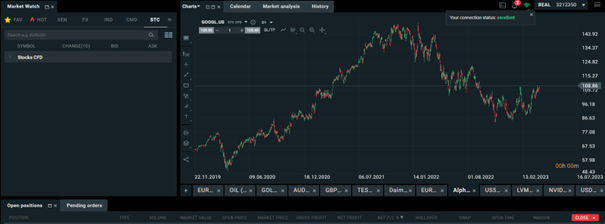After thinking about this for some time, and processing it, I remembered that it was not the first time he engaged in things like this. In fact, probably more than anyone else. Seems like he just like to be in the news. But ok, I left this aside and started thinking, how this news can help me with investing. Didn’t take long, to be honest, to figure out that he will be great competition to an existing ChatGPT and others.
Since Elon’s AI will go through different company than Tesla, I decided to put my focus in stocks of Google, since Microsoft is already bought on my account. Google is trying to catch up with ChatGPT with their own AI chatbot called Bard. However, for now, it is not even close to it, or I can’t say that it already is worthy competitor. On the other hand, Google get many important data from Google Maps, Google Search, etc. which can help the AI to faster and better update itself. On the other hand, Microsoft for sure also has quite big database with intel for it, so I wouldn’t put much focus in this matter at the moment.
I had mixed feelings about fundamental analysis, that’s why I decided to rather focus on technical analysis. Since the middle of September last year, price of a stock was moving between 87 USD and current price of 109 USD.* Based on the chart, we can see that the price reached resistance level, so the next few hours/days will be crucial to where the price might go. If it will break it, then I expect it to rise more, if not, a downfall might follow. The price, however, is far below the historical high at 150 USD, so I decided to buy stocks of Alphabet as soon as US market will open.*
Even if Google will not be successful in competing with other AI projects, they still have many other sectors to cover for it. Regardless, it is an amazing company, with proven history and strong plans for the future.

* Past performance is no guarantee of future results.
Link to a 5-year chart: https://www.investing.com/equities/google-inc








